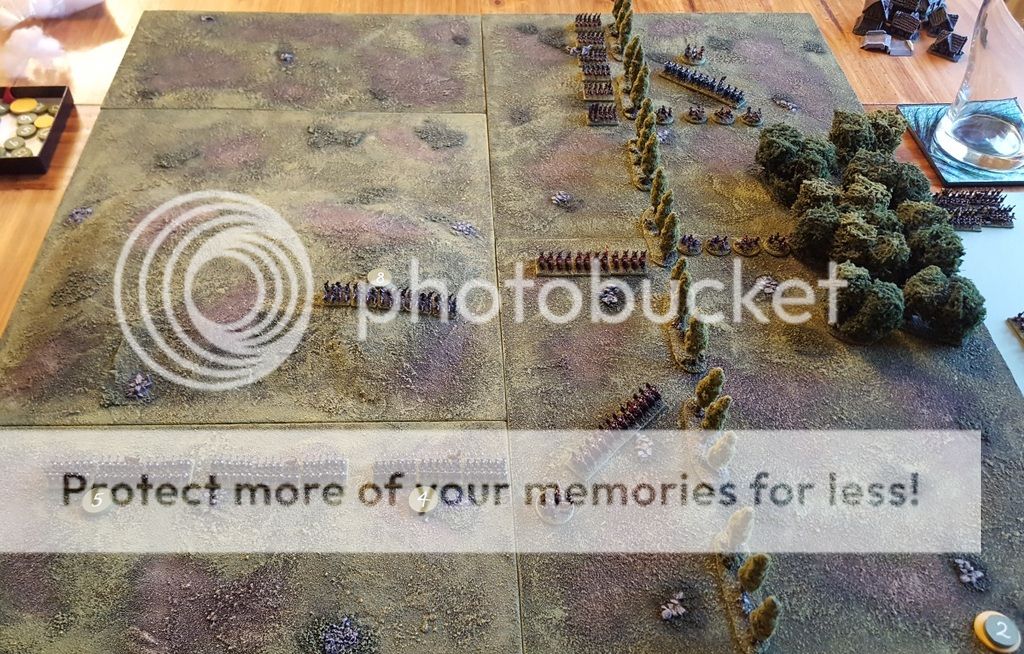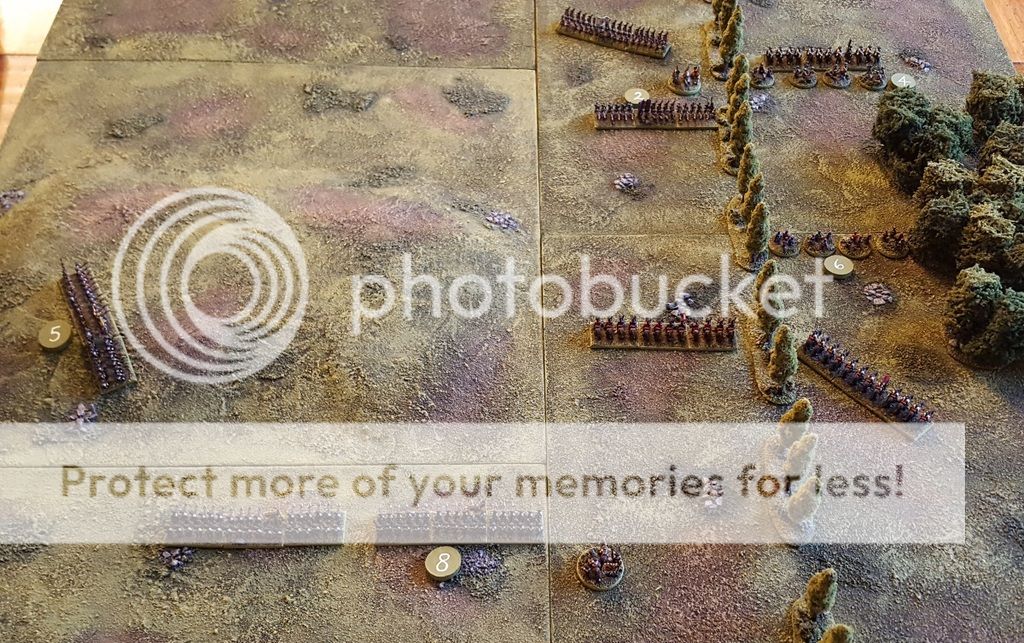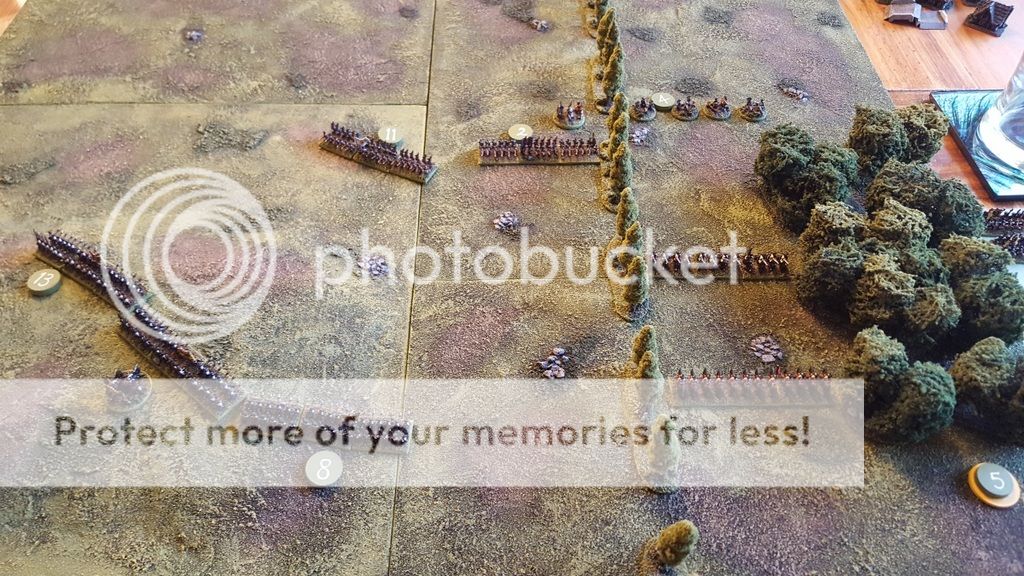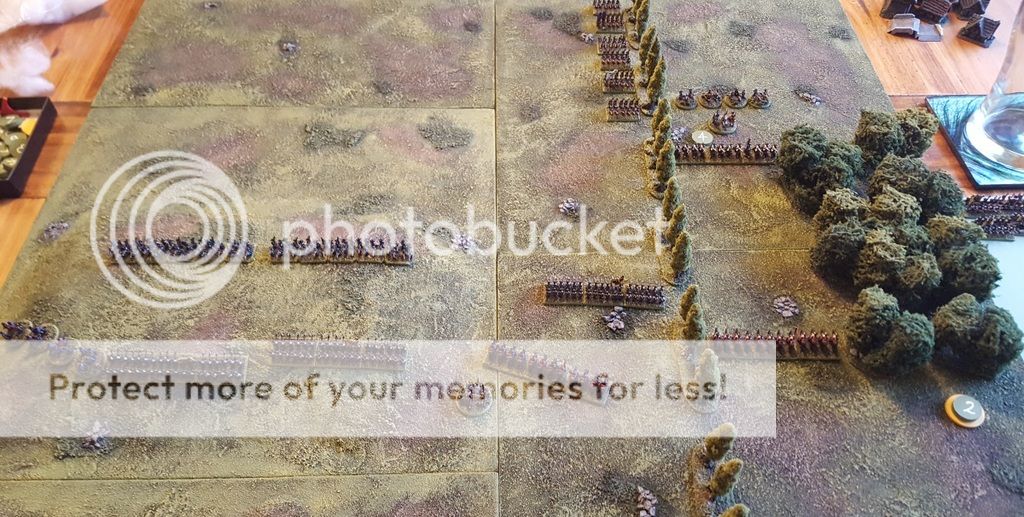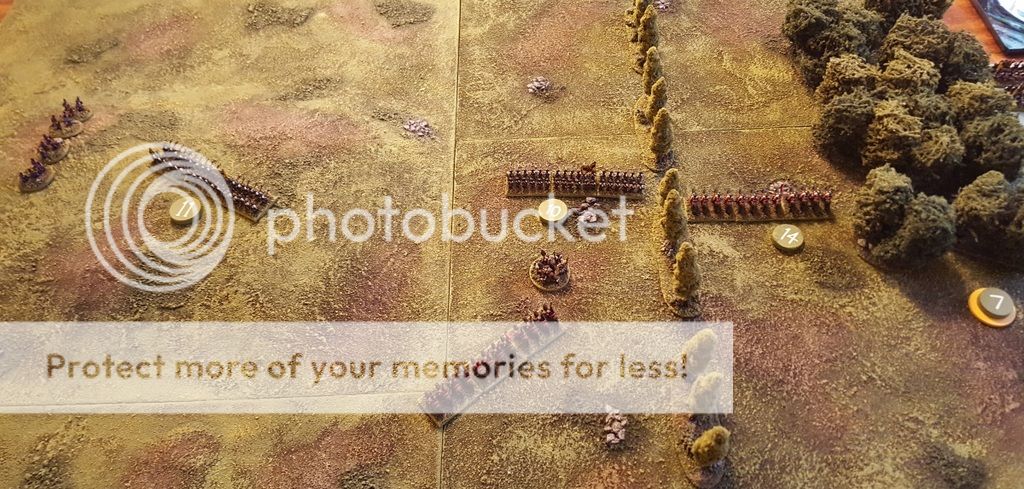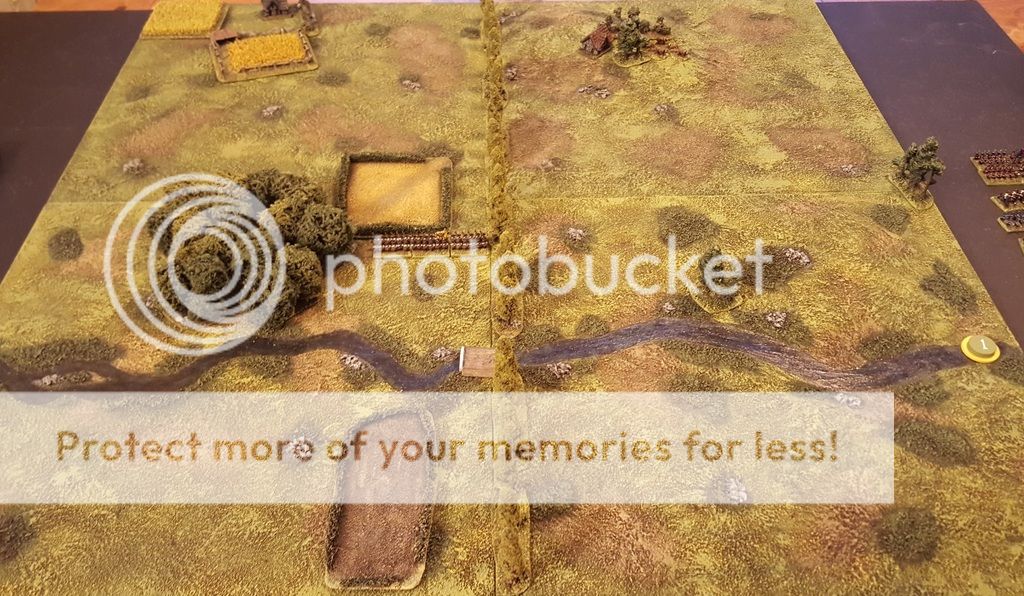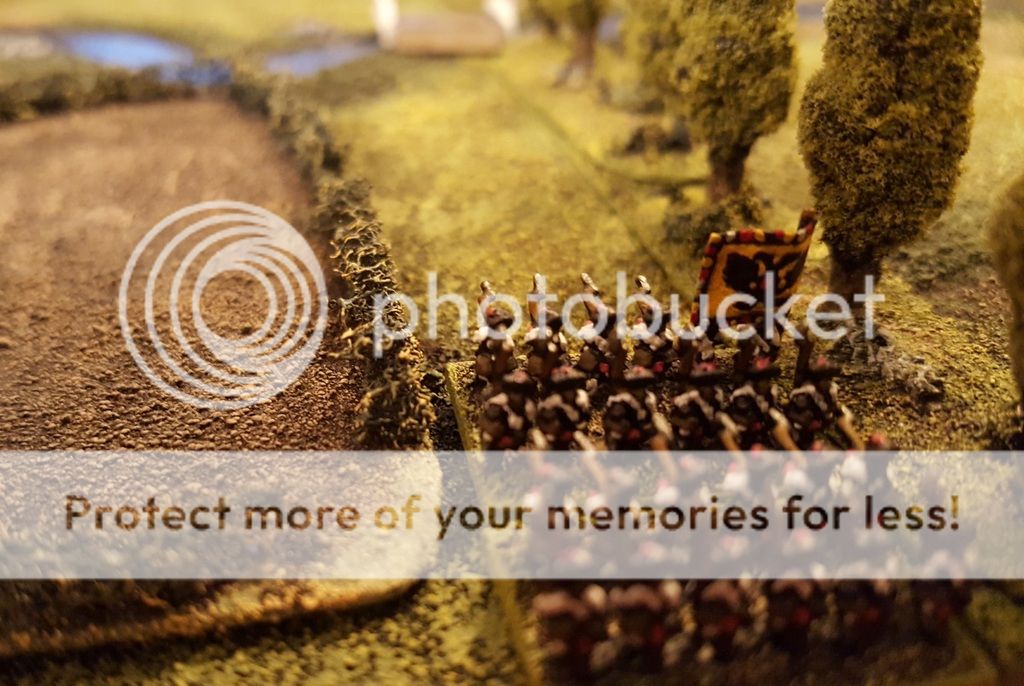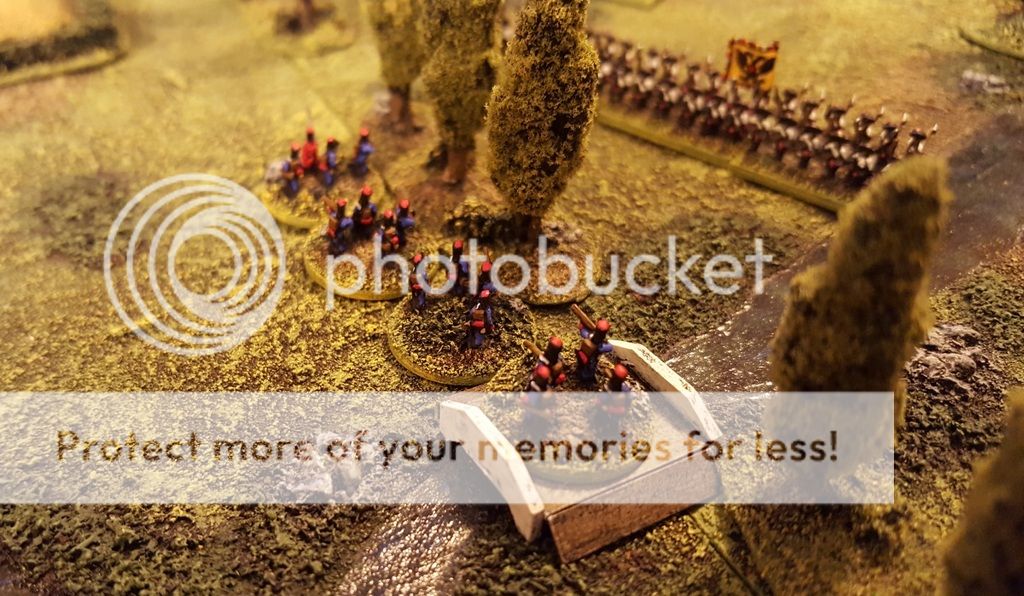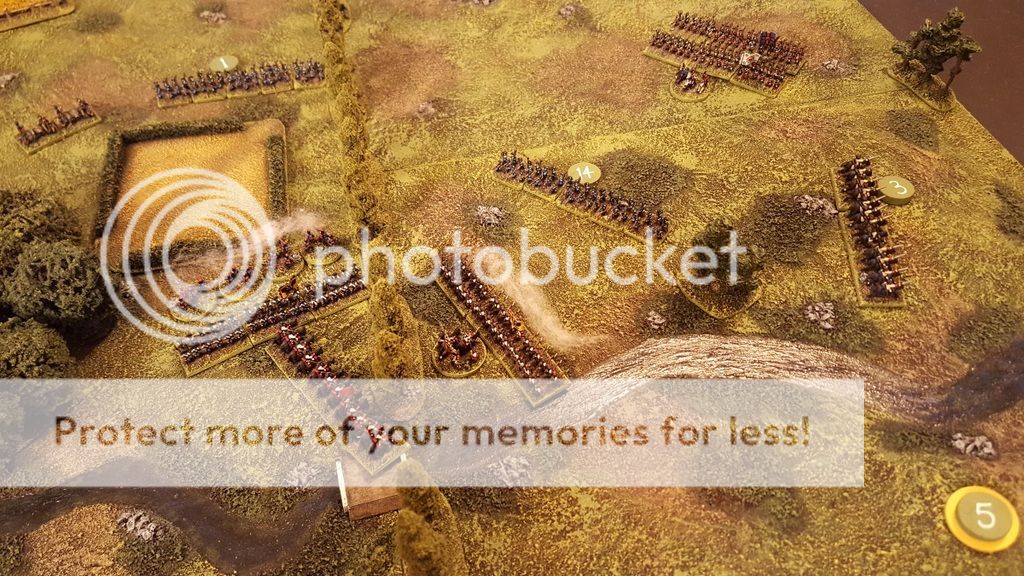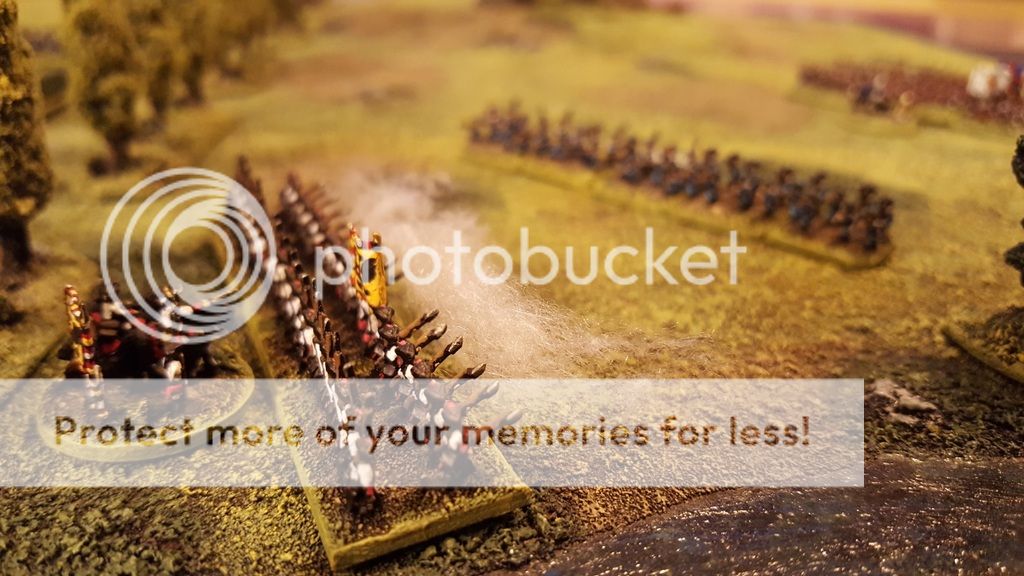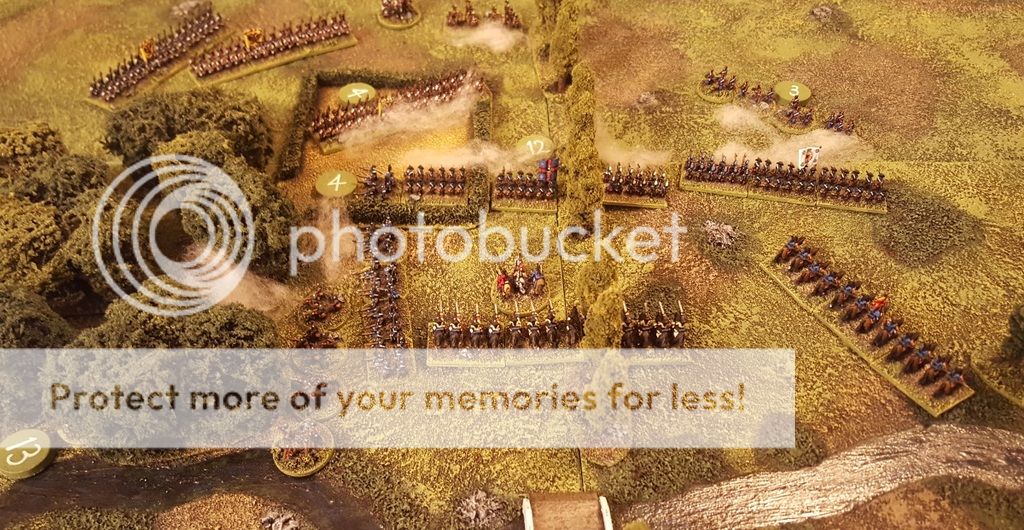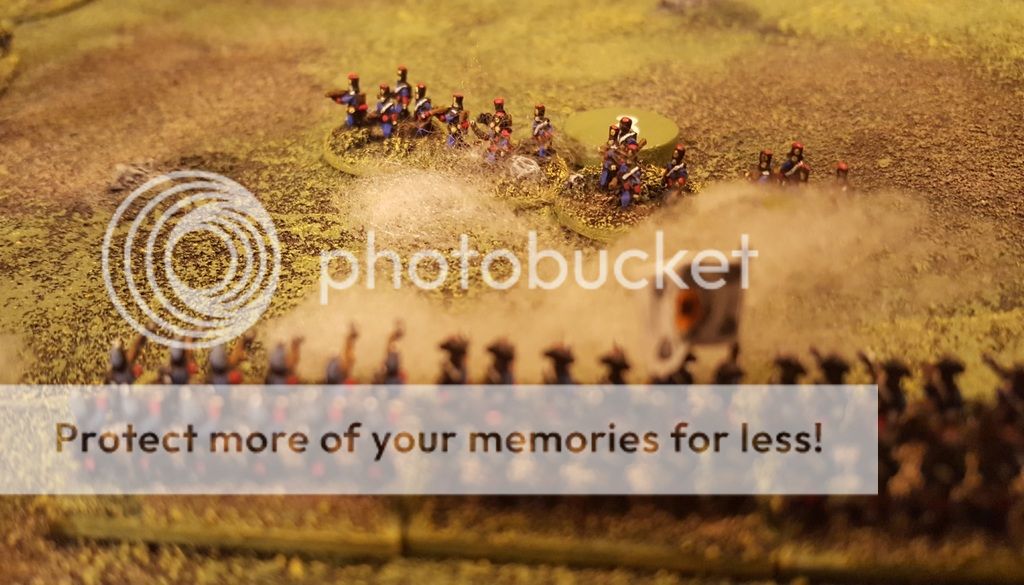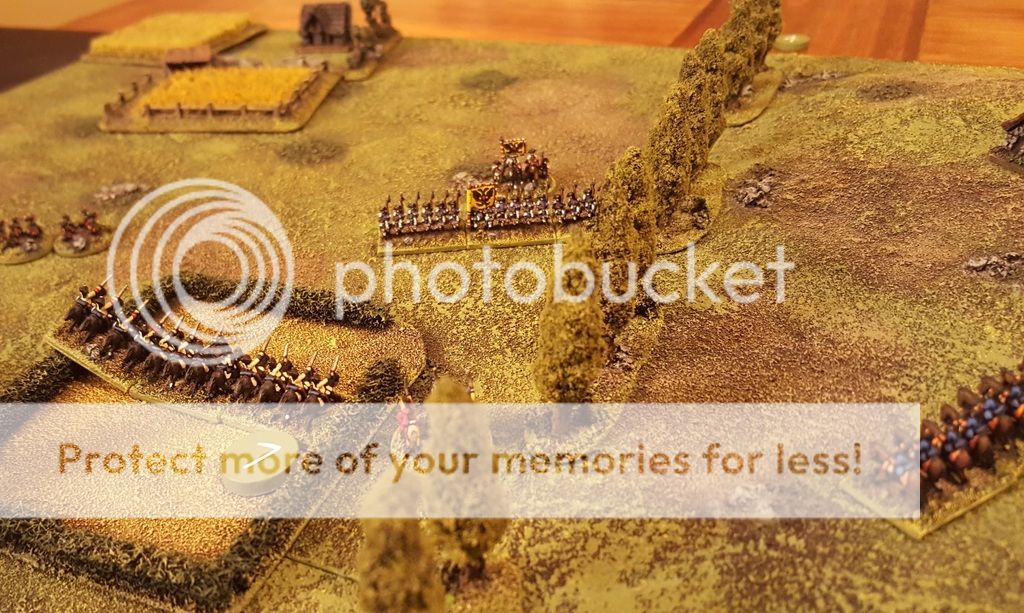The blog’s been a bit quiet lately, but I do have some updates on recent games and painting efforts.
Since my previous posts in October about trying the rules and scenarios in Neil Thomas’ ‘One Hour Wargames’, there have been some further games and even a mini-campaign.
I wanted to play a series of linked games so wrote some simple campaign rules to govern the movement of various forces on a map and deal with the outcomes of battles, etc. I decided to go with a trusty square grid map, partly for convenience when it came to movement and terrain effects, and partly so I could use MS Excel to create it and avoid having to fall back on non-existent artistic skills.
I set the campaign in Silesia in about 1757, but created the specific local area to suit what I wanted. The outline was for the Austrians to invade Prussian-held territory and recapture the key town of Werthenstahl. Each side had 2-3 forces initially, with the potential for more to arrive later on.
The campaign starting positions – the Austrians are about to cross the river, for which they’ll need to lay a pontoon bridge in the north if they want to capture Felshelm early on.
The pontoon is successfully laid with a decent dice roll and this will now release the Prussians to move. Their main priority will be to get Force A underway to support the observation forces before they’re overwhelmed.
Last pic – the action has been going on for several turns and there have been 8 battles so far, using a variety of scenarios from the book. The latest encounter has seen Austrian Force C beaten and forced to retire. This will generate some relief for the Prussians who have been on the receiving end of a few defeats of their own.
The Force Strength tracker in the bottom right corner shows the relative size of each force on the map. Where they are the same, I play a 6 vs 6 unit scenario, where there is a difference of 1 strength I play a 6 vs 4 unit scenario, and where there’s a difference of 2 strength, the weaker force must withdraw or, if trapped, face scenario 30 Last Stand! I try to match the scenario and terrain to the general situation on the map, in terms of who’s attacking/defending, whether there’s a river involved, etc.
The campaign has been fun and has encouraged me to try similar things, with very simple campaign rules, in the future.
Recent Games
Last weekend my mate Jase and I played 3 stand-alone games, resulting in one marginal win and two draws, illustrating how well-balanced the scenarios are (or how mutually crap we both are at winning).
We re-visited Scenario 4 – Take the High Ground a couple of times, and then had a go at one with unbalanced forces; Scenario 20 – Fighting Retreat. Both scenarios are well designed and provide for interesting games.
Mid-game in Take the High Ground:
The Austrians decide to run for it in turn 1 of Fighting Retreat:
These games were very enjoyable and hit the spot in terms of providing some quick, challenging entertainment while drinking quite a lot of beer. 🙂


























